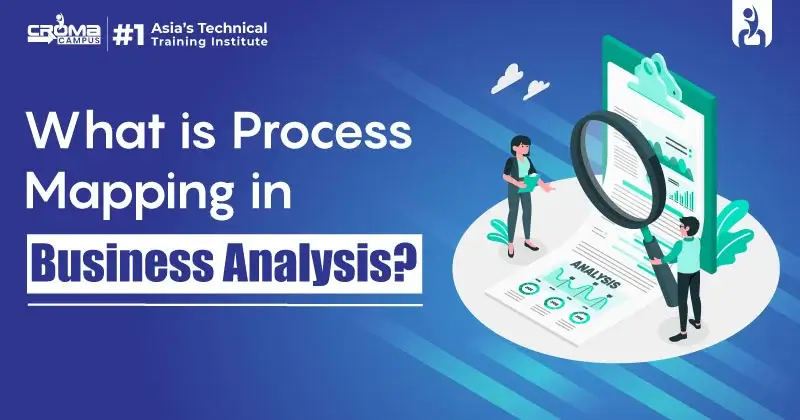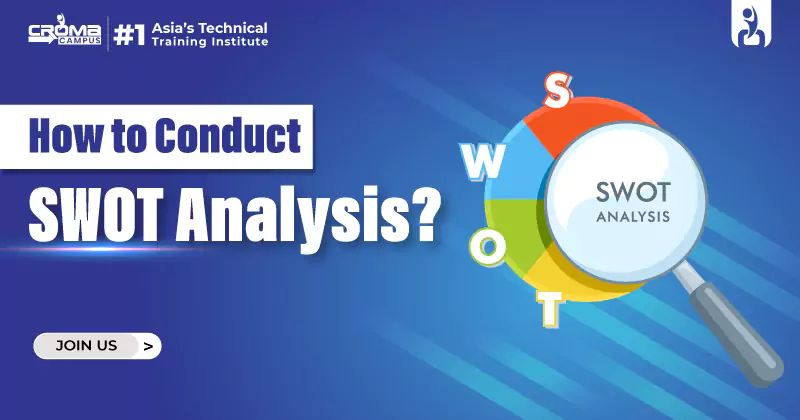What Is Process Mapping In Business Analysis?
4.8 out of 5 based on 1579 votesLast updated on 20th Dec 2022 3.7K Views
- Bookmark

Today, every business is moving towards correct Business process mapping for desired results. For more details read this blog post.

Introduction
Business process mapping is a powerful technique in business process management (BPM). It offers visual process steps and shows how a process should function from start to finish. With this technique, business processes are laid out visually so every stakeholder in your organization can understand and follow proper functioning. To work effectively with this technique, you can take Business Analysis Training in Noida for better guidance. Also, every business nowadays is moving towards correct Business process mapping for desired results. Moving forward, let’s focus on the steps involved in Business Process mapping.
Business Process Mapping Steps:
Process mapping can help many businesses from improving processes to training and workflow clarification. Here are some steps to create a process map for your business.
1. Process Identification
Identify the objectives, work, scope, and player areas you want to focus on. This can be done on three levels: reactive when addressing a process that failed or underperformed; strategic, as in high-level service; and customer-focusing, such as seeking better customer satisfaction.
2. Team Assembling
Organize a group of people who work with the process. Whereas, it helps to have a senior management person on board, too, as they can help with approvals with changing requests
3. Information Gathering
After identification of the process, you must collect the information you’ll need to create your process map. Especially the who, what, where, and when of the business process. This is further done by collecting information and conducting interviews with the people who do the mapping work.
4. Process Mapping
Accumulate all the information and turn it into a process map flow diagram. This will include the process or overall workflow. All process maps vary, but these are the main elements you should include in your workflow diagram:
Tasks: Every single step of the workflow.
Events: Triggers or gateways that start, redirect, or end a process.
Participants: Those taking part in the business process.
5. Analysis
Study the process map and challenge each of the steps by questioning why.
6. Develop and Install New Methods
After your process analysis, you identify unnecessary work and see how steps combine, rearrange, or addition of new steps to improve efficiency.
7. Manage Process
Now, it is necessary to maintain and store the Business process. And also review it routinely, to monitor the process for changes.
Types of Business Process Maps
Business process mapping can be done in multiple ways. There are various types of process maps you can use to visualize your processes. Certainly, each of those process maps has certain advantages and disadvantages.
Process Flow Diagram
Flow diagrams are the most basic type of process map. They can be hand-drawn or built into the software. The ease of use and familiarity are its advantages. However, the disadvantage is that these types of business process mapping lack the flexibility to change the flowchart.
Swimlane Diagram
Basically, in a swimlane diagram, each step is divisible between different teams or individuals who are responsible for them.
Value Stream Map
A value stream map is generally useful in Lean Six Sigma applications. Typically, it’s not that easy to analyze at a glance. Therefore, this is of benefit to those looking for a more in-depth view of business processes.
SIPOC Diagram
A Supplier Inputs Process Outputs Customer is a simplified business process map. It removes most of the information. Additionally, focuses solely on the necessities of the process and the people involved.
Conclusion
Indeed, Process maps can help greatly with general problem-solving. They create a visual of the process, and in doing so, make it further easier to discover conflicts. To enable smooth workflow in your business, Business Analysis Course can guide you on the correct path. Additionally, business process mapping helps identify risks from processes and causes business legal or health and safety issues.
Subscribe For Free Demo
Free Demo for Corporate & Online Trainings.
Your email address will not be published. Required fields are marked *



.jpg)


















 Master in Cloud Computing Training
Master in Cloud Computing Training